Top Image: Professor Charles Hapgood believed strange, unexplained
maps were signs of a long-forgotten civilization of ancient sea kings.
Source: Freesurf / Adobe Stock
Charles H. Hapgood began his book, Maps of the Ancient Sea Kings, by stating, after studying composite maps at least partially derived from ancient sources, that ancient voyagers traveled from pole to pole.
The evidence, he said, indicated that some ancient people explored Antarctica when its coasts were free of ice.
It is clear too that they had an instrument of navigation for accurately determining longitudes that was far superior to anything possessed by the peoples of the ancient, medieval, or modern times until the second half of the 18th century.

Some scholars have long claimed that a world civilization existed thousands of years ago - long before Egypt.
They have even claimed that
this lost civilization was almost as advanced as ours today.
In this book, Professor Charles H. Hapgood has produced the first concrete evidence of the existence of such a civilization.
In this book, Professor Charles H. Hapgood has produced the first concrete evidence of the existence of such a civilization.
He has found the
evidence in many beautiful maps long known to scholars, the so-called
Portolano charts of the Middle Ages, and in other maps until now thought
to have originated around the time of Columbus.
Working with his
students over a period of seven years, Hapgood has discovered evidence
that many of these maps must have originated in a civilization in some
ways much more advanced scientifically than Europe in the 16th Century,
or than the ancient civilizations of Greece, Egypt, and Babylonia.
Not only were these unknown people more advanced in mapmaking than any people prior to the 18th Century, it appears that they mapped all the continents.
Not only were these unknown people more advanced in mapmaking than any people prior to the 18th Century, it appears that they mapped all the continents.
The Americas were mapped thousands of years before Columbus.
Antarctica was mapped when its coasts were still free of ice.
There is
evidence that these people must have lived when the ice age had not yet
ended in the Northern Hemisphere and when Alaska was still connected
with Siberia by the Pleistocene, ice age 'land bridge.'
In this book, Hapgood has not merely modified our ideas about ancient history, but his work will necessitate a widespread revolution in our concepts about the whole history of man, the history of his science, and the evolution of human culture.
In this book, Hapgood has not merely modified our ideas about ancient history, but his work will necessitate a widespread revolution in our concepts about the whole history of man, the history of his science, and the evolution of human culture.
Hapgood shows that man's evolution from
brute to citizen of the world spans a longer time than we have ever
supposed.
Hapgood became interested in the study of ancient maps after reading a book on the subject by Captain A.H Mallory, Lost America .
Mallory had come across a copy of the Piri Reis Map , a world map compiled in 1513 by the Ottoman admiral and cartographer, Piri Reis.
He said publicly that the map seemed to show Antarctica, before it was discovered, and, furthermore, the coast seemed to have been mapped when it was free of ice.
In addition, Mallory’s opinion had been endorsed by the directors of the astronomical observatories at Boston College and Georgetown University.
As a result of Mallory’s inquiry, Hapgood’s initial interest was focused on the Piri Reis Map.
Hapgood found that it showed South America and Africa in correct relative longitudes.
This was most remarkable, for the navigators of the 16th century had no means of finding longitude except by guesswork.
Piri Reis Map, drawn in 1513.
( Public Domain )
Another amazing thing that attracted him to this map was that it appeared to show the continent of Antarctica, three centuries before it was discovered in 1818.
Antarctica is actually two large bodies of land, Greater and Lesser Antarctica.
However, when we refer to Antarctica as a continent, we are referring to Greater Antarctica, which is roughly the size of the continental United States.
Writing to the United States Air Force, he asked if there was any correlation between various geographical details on the Piri Reis Map and results of seismic findings conducted by the Swedish-British-Antarctic Expedition of 1949.
The report showed there was high correlation between Antarctica under the ice with large portions of the map.
In fact, it corresponded with fifty-five specific geographical locations on the continent.
The maps that Hapgood studied were portolano, or port to port, maps.
Portolan charts came about in the late 13th century.
Portolan charts were realistic depictions of coastlines and their ports, drawn by navigators from their own experience and for their own guidance.
Hapgood thought it odd that some of the early maps seemed too accurate to have been drawn by medieval sailors and that successive charts showed no signs of development.
After comparison, he found that the portolanos were much more accurate than maps made by Ptolemy, the most famous geographer in the ancient world, in the 2nd century AD.
1439 portolan chart by Gabriel de Vallseca (Museu Maritim, Barcelona).
( Public Domain )
Hapgood and his students spent three years searching for the center of the map, which they found to be at the ancient city of Syene, in Egypt near Giza.
Consulting a mathematician, he learned that the projections on the map had been made by plane trigonometry.
In addition, Hapgood found that some of the positions on the Piri Reis Map were very accurate, and some were far off.
Gradually, he became aware of the reasons for some of the inaccuracies in the map.
He discovered that the map was a composite, made by piecing together many maps of local areas (perhaps drawn at different times by different people), and that the errors had been made in combining the original maps.
According to Colin Wilson and Rand and Rose Flem-Ath in their book, The Atlantis Blueprint , the ancient maps were frequently accurate to within one half-degree of longitude—something Europeans didn’t achieve until the invention of the marine chronometer in the eighteenth century.
Determining Longitude
Determining latitude was relatively easy since it could be found from the altitude of the sun at its highest point with the aid of a table giving the sun's declination for the day, or from many stars at night.
For longitude, early ocean navigators had to rely on dead reckoning, the process of calculating one's current position by using a previously determined position, or fix, and advancing that position based upon known or estimated speeds over elapsed time and course.
This was inaccurate on long voyages out of sight of land and these voyages sometimes ended in tragedy as a result.
In order to avoid problems with not knowing one's position accurately, navigators have, where possible, relied on taking advantage of their knowledge of latitude.
They would sail to the latitude of their destination, turn toward their destination, and follow a line of constant latitude.
This was known as running down a westing, if westbound, easting, otherwise.
This prevented a ship from taking the most direct route or a route with the most favorable winds and currents, extending the voyage by days or even weeks.
This increased the likelihood of short rations, which could lead to poor health or even death for members of the crew due to scurvy or starvation, with resultant risk to the ship .
Others thought the answer lay in chronometry, developing an improved timepiece that would work even on extended voyages at sea.
A suitable one was eventually built by Yorkshire carpenter John Harrison, using his marine chronometer.
Though the British Parliament partially rewarded Harrison for his timepiece that contributed to an accurate marine chronometer in 1773, his chronometers were not to become standard.
Chronometers such as those invented by Thomas Earnshaw were in general nautical use until the middle of the 19th century.
However, they remained very expensive and other methods were used instead.
Harrison's Chronometer H5 of 1772, now on display at the Science Museum, London.
(Racklever /CC BY SA 3.0 )
Hapgood Explains the Errors in Compilation
Hapgood knew that the ancient Greek geographer, Eratosthenes, living about a century before the supposed invention of trigonometry, had overestimated the circumference of the earth by four- and one-half percent.
Redrawing the map to account for these errors, Hapgood and his students came to a startling discovery: The Greek geographers of Alexandria, when they prepared their world map using the circumference of Eratosthenes, had in front of them source maps that had been drawn without the Eratosthenian error- that is, apparently without any discernible error at all.
Hapgood concluded that errors in the Piri Reis Map were due to mistakes in its compilation, presumably in Alexandrian times, and derived from ancient source maps.
This agrees with Peter Tompkins, who, in his book Secrets of the Great Pyramid , suggests that the Alexandrian geographers did not understand the information they were handling, which was based on an advanced science that preceded them.
Sections of the Piri Reis Map, according to Hapgood, seem to be extremely accurate and, he concluded, the original mapmaker must have found correct relative longitude across Africa and across the Atlantic from the meridian of Alexandria to Brazil.
This is amazing when one considers that Columbus, in 1492, made serious mistakes in finding latitude, and, of course, had no way of determining longitude, resulting in over a 1250-mile (2011.68 km) miscalculation of his location when he arrived at San Salvador in the Caribbean.
There are suggestions, however, that Columbus had maps of Cuba before his first voyage.
Implicit, of course, in this assessment is that the Piri Reis Map is evidence of a decline of science from remote antiquity to classical times.
Spherical Trigonometry
Hapgood realized that one reason that ancient Greek geographers had difficulty interpreting these source maps was that they were compiled using spherical trigonometry:
What else can we conclude but that the mapmaker, confronted by a spherical projection he did not understand, had to translate his geographical data (latitudes and longitudes of places in the Caribbean) into terms of a flat surface? This contains the implication, of course, that spherical trigonometry must have been known ages before its supposed invention by Hipparchus in the second century BC.
It also raises another question: How did it happen that a world map, apparently drawn ages before Hipparchus, was centered on Egypt? Can we ascribe advanced knowledge to the Egyptians? It seems that perhaps we can.
The ancient Egyptians, but not the Greeks, Hapgood concluded, knew the science of translating spherical surfaces into flat ones of equal areas, or vice versa, by using the mathematical phi relationship.
Since the Greeks did not understand this, they distorted the information handed down to them.
Right half of the ancient Egyptian Turin papyrus map.
( Public Domain )
Hapgood concluded that the ancient Egyptians had more advanced science than the Greeks.
Hapgood was aware that maps were available that showed other places in the New World.
Among these locations were the Andes Mountains, and the drawing of the mountains indicates that they were observed from the sea, the mouth of the Amazon River, the St.
Lawrence River, and the eastern half of Cuba.
For instance, a point of considerable interest is the shape of the Atrato River.
The river is shown for a distance of 300 miles (482.8 km) from the sea and its eastward bend at five degrees North Latitude corresponds to the geographical facts.
This suggests that somebody explored the river to its headwaters in the western cordillera of the Andes sometime before 1513.
There is no known record of such an exploration.
We already know that the ancients mined tin in the Andes Mountains and copper around Lake Superior, since bronze requires both of these materials.
They would have needed maps to get to these places.
John White, in his book, Pole Shift , notes that Hapgood never mentioned the word ‘Atlantis.’ However, Hapgood did talk about “a great island” on the Piri Reis Map in the Atlantic Ocean.
Since it was so carefully drawn, and since Hapgood believed this island would have been ideally suited by climate and location for agricultural and commercial development and as a base for navigation, he concluded that this may have been the home for the people who developed the maps.
Oronteus Finaeus Map of 1531
In 1959, while studying maps in the Library of Congress, Hapgood sat transfixed: “As my eyes fell upon the southern hemisphere of a world map drawn by Oronteus Finaeus in 1531, I had the instant conviction that I had found here a truly authentic map of the real Antarctica.”
The mountain ranges shown were individualized, some being on the coast and others inland.
The map showed rivers flowing into the sea, suggesting the coasts may have been ice free when the original map was drawn.
The most interesting thing was that once Hapgood corrected the map for scale, he concluded that the size of the Antarctic Continent on the map of Oronteus Finaeus was correct by modern findings.
He concluded that as the ancients had a correct idea of the size of the Antarctica Continent suggests that they may have had a correct idea of the size of the earth as well; knowledge that is reflected in the Piri Reis Map.
Gerhard Kremer, known as Mercator (1512-1594), the most famous cartographer of the 16th century, compiled an Atlas which included the Oronteus Finaeus Map as well as another map, drawn from source maps, called the Mercator Map.
This map showed numerous points on the continent of Antarctica clearly.
Oronteus Finaeus Map.
( Public Domain )
According to Hapgood, Mercator had source maps available to him other than Oronteus Finaeus.
Mercator complied his Atlas in 1538 and, as maps were being drawn by early explorers, revised this in 1569 to reflect changes reported by them.
Hapgood states: “Oddly enough, in his map of 1538, thirty years earlier, Mercator had represented the west coast of South America much more correctly.” Hapgood suggested that the first map depended on ancient sources while the latter map relied on feedback from early explorers, who had no accurate longitude and so could merely guess at the trends of coasts.
The Dulcet Portolano Map of 1339
The Dulcet Portolano Map of 1339 appeared in Europe in the early 14th century.
According to Hapgood, the map reflects accurate information on the latitudes and longitudes of places scattered all the way from Galway in Ireland to the eastern bend of the Don in Russia.
A.E.
Nordenskiold, in his nineteenth century book, The Voyage of the Vega Round Asia and Europe , had earlier concluded that no medieval mapmaker could have drawn this map.
Hapgood believed that the mapmaker used spherical trigonometry in the compilation of this map.
Hapgood believed that the mapmaker used spherical trigonometry in the compilation of the Dulcet Portolano Map of 1339.
( Public Domain )
The De Canerio Map of 1502
The De Canerio Map of 1502, covering the whole continent of Africa as well as Asia, shows remarkable accuracy in latitude and longitude.
According to Hapgood, the average error in latitudes of 11 places - Gibraltar, the northern coasts of Sardinia, Sicily, Cyprus, and Crete; Cape Bon, Bengazi, Lesbos, the Bosphorus, Sevastopol, and Batum - was only one half of one degree.
The longitudinal distance between Gibraltar was accurate, proportional to the latitude, suggesting there may have been no significant error in the original source map as to the size of the earth.
Hapgood was shown numerous other maps .
These maps showed accuracy in latitude and longitude, which are only surpassed by modern maps.
He concludes that this reflects the mapmaking of an advanced ancient culture.
De Canerio Map.
( Public Domain )
The Haji Ahmad Map
The Haji Ahmad map, which appeared in Turkey in 1559, shows the American continent so accurately that it could easily be mistaken for a modern map.
Strangely, it shows Asia and Alaska joined together.
It does not show Beringia, the land bridge across the Bering Strait, which was submerged at the end of the last Ice Age.
Hapgood speculated that the Hadji Ahmed map was based on far earlier maps that date back to a long-forgotten civilization of ‘ancient sea kings.’
Hapgood admitted that about 900 miles (1448.41 km) of South American coastline are missing from the map.
He addressed many more specific criticisms, and also pondered: Could Piri Reis, entirely by chance, have placed a range of enormous mountains in approximately the same place where there is a range of enormous mountains?
Furthermore, the Hapgood team identified 50 geographical points on the Finaeus map, as re-projected, whose latitudes and longitudes were located quite accurately...
some of them quite close to the pole...
There are other factors, too.
The cartography of the Age of Discovery, for instance, often seems to have been independent of the voyages themselves, that is, certain maps of America contain features before their supposed date of discovery.
Hadji Ahmed’s world map, 1559.
( Public Domain )
Looking at all this data, Hapgood concluded that an advanced civilization existed in prehistory .
This intelligent culture, he estimated, lived up to 100,000 years ago.
This agrees with mystics such as Theosophists, Rosicrucians, and the American psychic, Edgar Cayce.
Compare that to conventional science, which proposes our ancestors were hunters and gathers at this time.
It begs the question: Who’s correct?
Links :
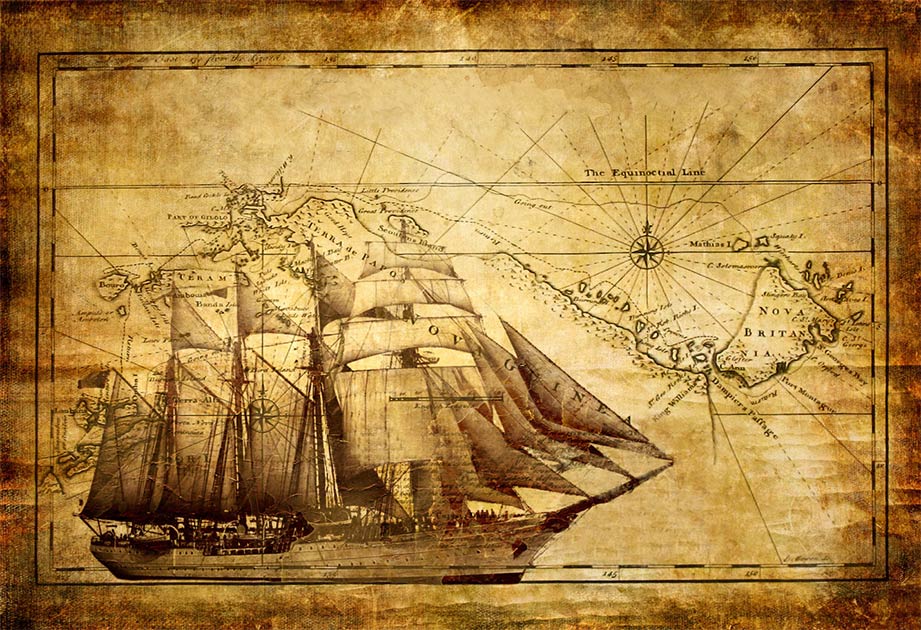
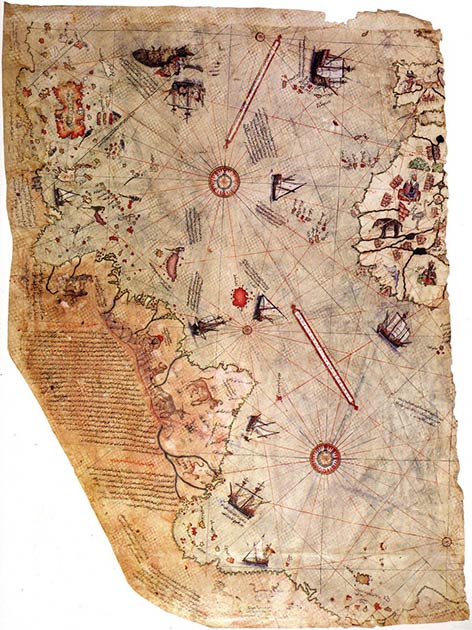
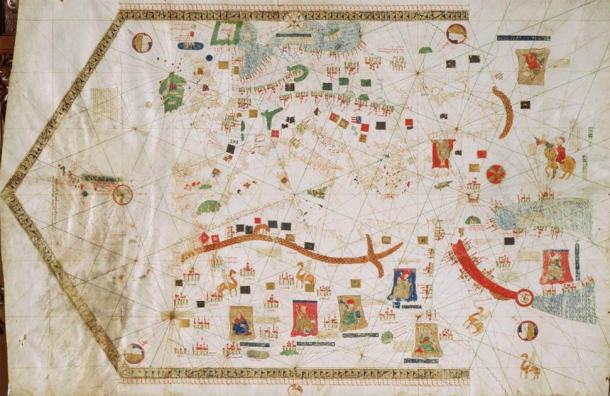
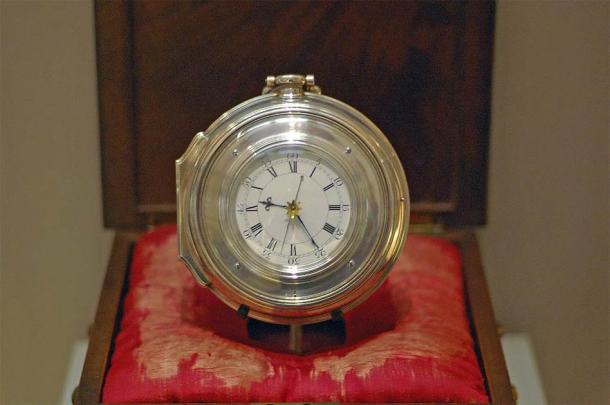
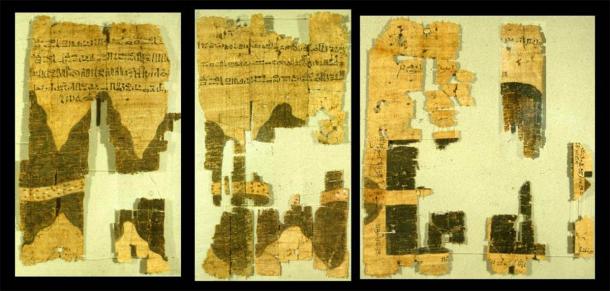
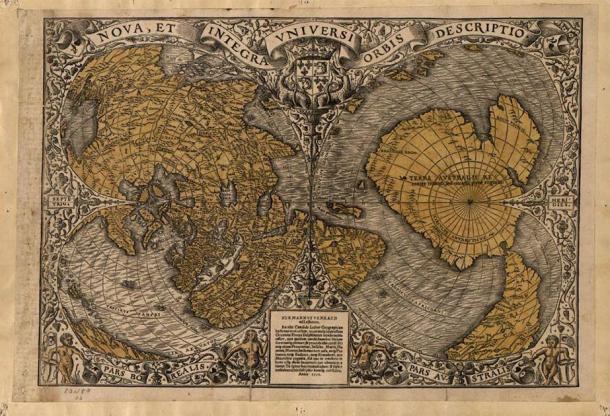
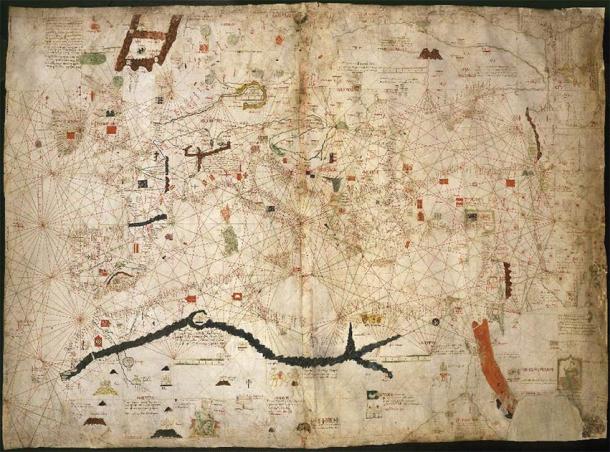
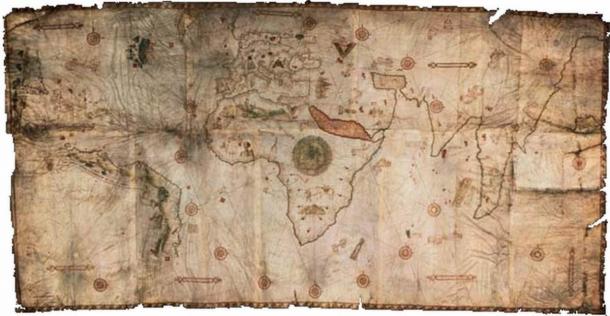
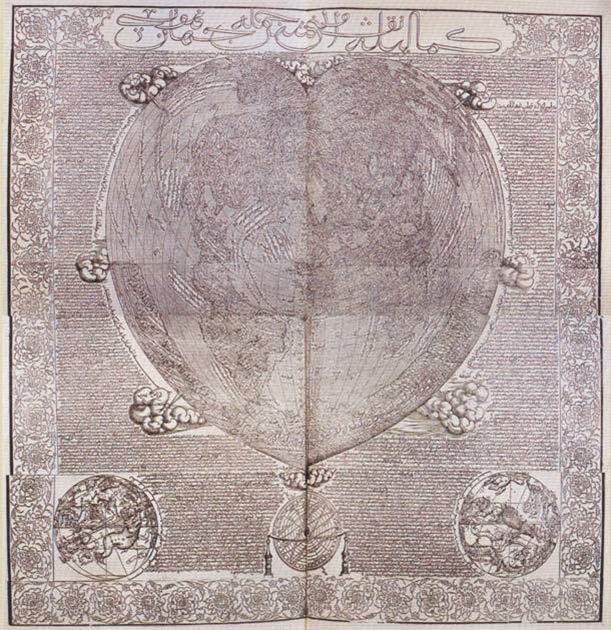
No comments:
Post a Comment